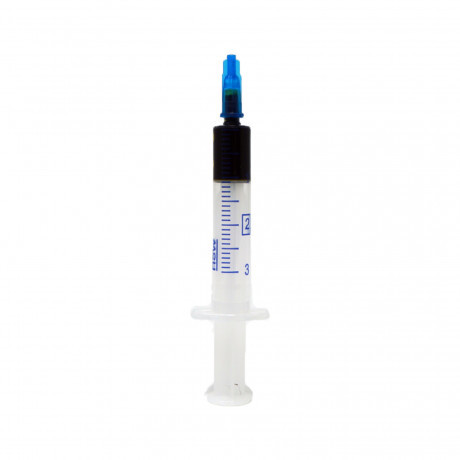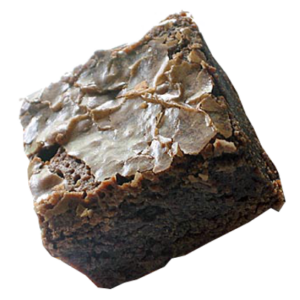
How to Make Rick Simpson Oil at Home
How to make Rick Simpson oil
A month’s supply of RSO is about 60 grams, give or take. Some users report using as little as 15 grams or as much as 180 grams per month. Again this also depends on the strain being used and the potency of the final product.
Approximately one pound (16 ounces) of top-shelf dried cannabis flower is required to make 60 grams of Rick Simpson oil. If you don’t grow your own marijuana, buying a pound can be quite expensive — well over $1,000.
One ounce of flower might cost anywhere from $100 to $500 depending on the THC content and other factors such as which state you’re in. Hemp flower, which is essentially THC-free, is on the lower end of the price range.
One ounce of cannabis flower (marijuana or hemp) will yield about four grams of RSO, give or take.
What you’ll need to make RSO:
Here is a complete list of the things you’ll need to make around 4 grams of RSO. If you want to make more than that, multiple accordingly.
- 2 pots or large mason mason jars (size depends on batch size)
- 1 ounce of high-quality marijuana or hemp buds
- 99% isopropyl alcohol
- Food chopper, blender, or cannabis grinder
- Stirrer (metal or wood, no plastic)
- Rice cooker or crock pot
- Strainer or cheesecloth
- Oven mitts or pot holders
- Candy thermometer
- Hotplate or coffee maker
- Plastic dosing syringe (not a hypodermic needle)
Instructions For Making RSO Oil:
Here are step-by-step instructions for making RSO oil at home.
Be advised that this process uses flammable solvents and must be undertaken with great care to avoid serious injury or damage to property. Undertake this process at your own risk.
Rick Simpson Oil, aka RSO, is a concentrated cannabis extract with a high cannabinoid content. RSO contains high levels of THC and CBD. RSO is commonly referred to as a full-spectrum cannabis concentrate because it contains all of the various cannabinoids and terpenes found in the original plant.
RSO can be used topically to treat skin conditions such including melanomas. Patients can also use RSO in cooking or to make suppositories. Keep in mind that consuming excessive levels of high-THC RSO can cause severe intoxication.
Rick Simpson oil can vary in potency depending on the strain being used. Different marijuana strains contain different levels and ratios of THC and CBD. Total cannabinoid content in homemade RSO typically ends up somewhere between 50 and 80 percent. So a strain that contains a ratio of 2:1 THC to CBD would produce an RSO that also contains a 2:1 ratio.
To determine which strains might be ideal for their medical condition and lifestyle. patients should discuss the matter with an expert in medical marijuana such as a medical marijuana doctor, budtender or other healthcare professional knowledgeable in the use of medical marijuana.
STEP 1: Grind Buds And Cover With Solvent
Grind dried marijuana buds using a food chopper or grinder and place into a large mason jar. (Watch the video below for reference.)
Add enough alcohol* to fully cover the ground marijuana. Depending on the amount of flower, the amount of alcohol will vary. Generally, one gallon of alcohol is needed for every half-pound of flower.
*NOTE: Other solvents such butane, ether, or naphtha, can also be used, but these solvents are highly toxic and far more flammable and require special handling. The fumes of these solvents alone can irritate the lungs, eyes, and skin. And if the process isn’t done properly toxic residue can remain in the oil.
STEP 2: Mix Well To Extract The Oils
Cover the mason jar and shake the flower/solvent mixture well to blend everything together. After the mixture is thoroughly saturated with the solvent, continue shaking for an additional 10 minutes. The extra time is important, as the continued agitation helps extract the oils from the mixture. (If you don’t have a lid you can use a stirrer. But do so in a well-ventilated area.)
STEP 3: Strain Out The Plant Material
When the mixing step is completed, pour the contents into the second mason jar through a metal strainer or cheesecloth. The remaining plant matter in the strainer will still contain about 20 percent of its cannabinoid content, so a second straining might be in order if you wish to invest more time. To do so, place the leftover plant matter into the empty bucket and re-cover with alcohol to extract any remaining cannabinoids. Stir the contents for five to ten minutes and then strain it into the other jar with the first batch of liquid. Now you can throw out the leftover plant material, as it is devoid of cannabinoids.
STEP 4: Evaporate Off The Solvent
Next, you’ll need to evaporate off the solvent leaving behind a concentrated oil.
Place your jar uncovered into the rice cooker or crock pot. Add a couple inches of water to the pot (not directly into the jar) and turn up the heat to the highest setting.
It’s important to have proper ventilation in your home for this step as the fumes are toxic. Open doors and windows and turn on a ventilation fan.
Every ten minutes give the mixture a gentle stir, adding more of the cannabis liquid as the solvent evaporates out of the rice cooker. As the alcohol evaporates it’s imperative to pay close attention. When most of the alcohol is gone, reduce the rice cooker temperature to the lowest setting for 3 hours. Use a thermometer to ensure that the oil never exceeds 275 degrees. If it gets hotter, add a little bit of water. The evaporating water takes away some of the heat. Continue stirring occasionally until all the remaining liquid on top of the oil cooks off.
You’ll know all the alcohol is gone when small bubbles will no longer form on the surface. You will be left with highly concentrated cannabis extract. At this point it should be thick enough that it won’t flow when you tilt the pot.
Next, place the jar on a coffee maker or hot plate set to low for another one to three hours. This will ensure that the remaining alcohol will evaporate.
STEP 5) Draw concentrated oil into a plastic dosing syringe
Remove the container from the hot plate and allow it to cool. After the oil has fully cooled, draw it into a plastic syringe for easy and accurate dosing.
That’s it! The process of making RSO at home can be daunting for a beginner. Just take your time and always be extra cautious when dealing with solvents.
This video is similar but slightly different method that will also produce posative results:






